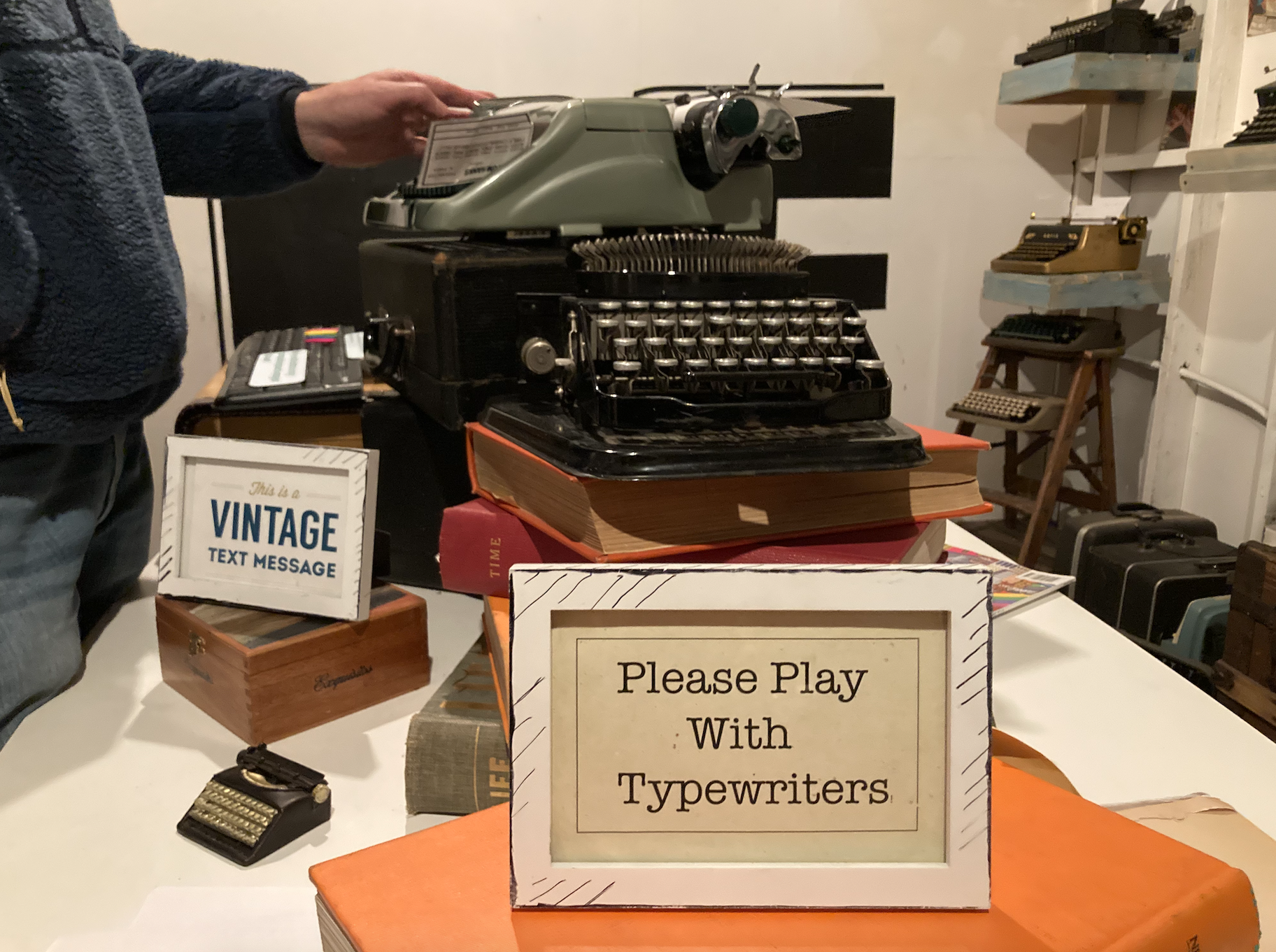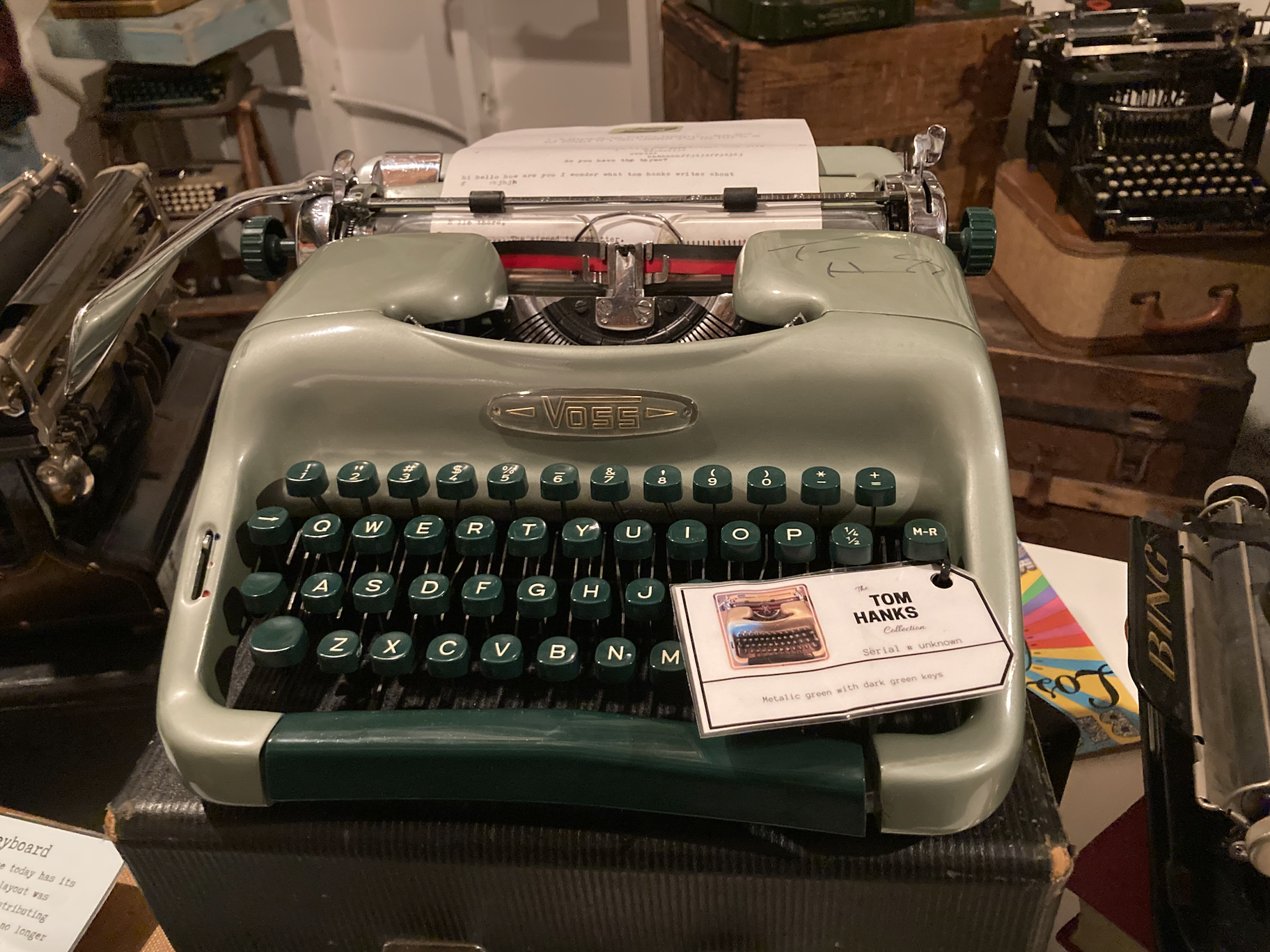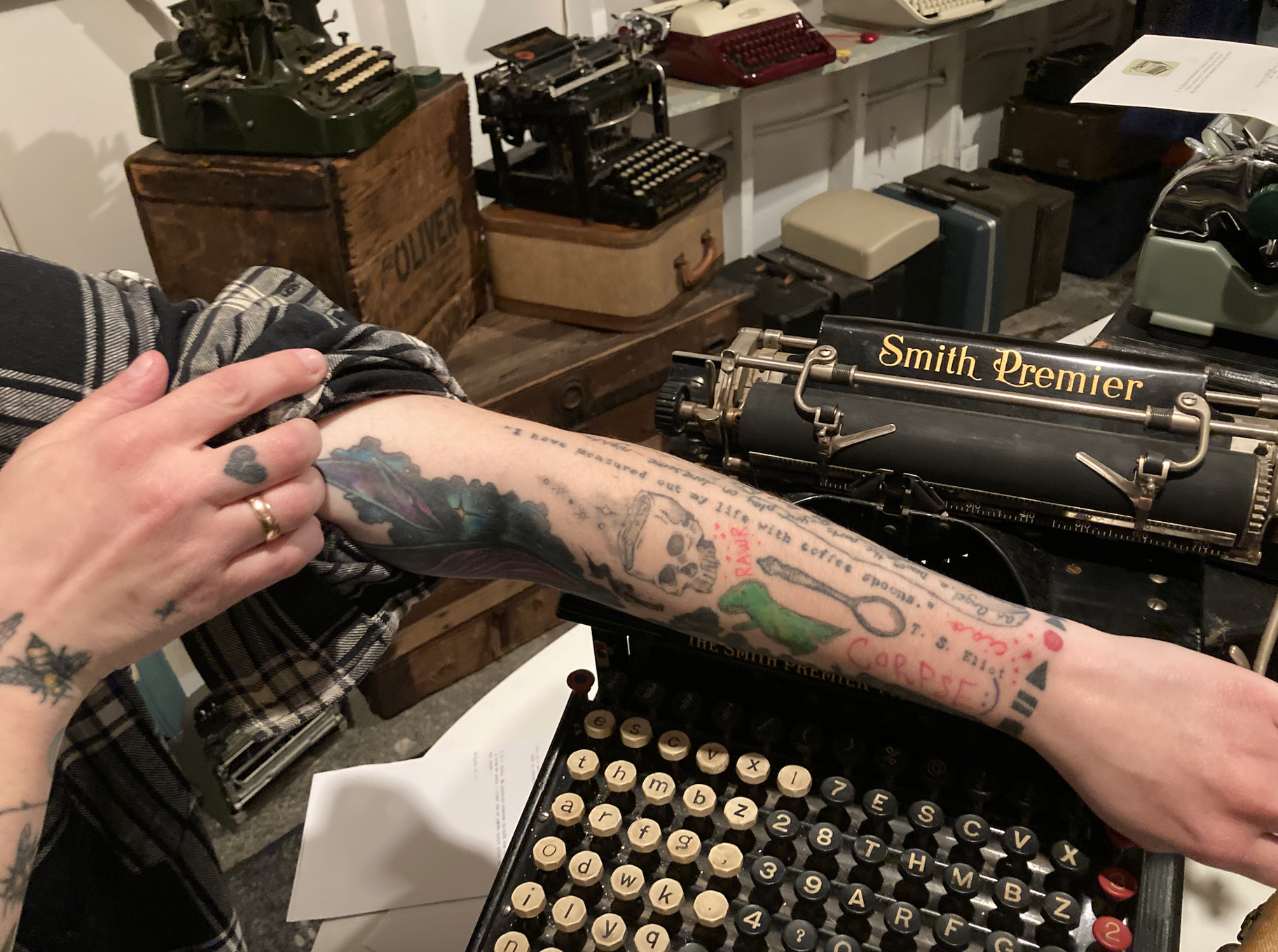Aaron Therol’s love affair began, of all places, in the back of his Burbank apartment complex. He was on his way to throw out the trash when he spotted his beloved, lying abandoned next to the building’s dumpster.
"It’s just a vintage suitcase,” he thought as gathered the bundle — yet a lot heavier than he would’ve guessed. As he settled back inside of his apartment, he opened the case, and found himself face-to-face with a 1950s-era Royal Typewriter.
“There was nothing wrong with it. It was still in working condition,” Therol recalls. “It boggles my mind that somebody would throw this away, because they don't make typewriters like this anymore … you’re throwing away a piece of history.”
The moment sparked what Therol describes as his “typewriter revolution.” A decade later, he’s the owner of Typewriter Connection, a Downtown LA-based business that rents, sells, and repairs the mechanical devices.
Dozens of typewriters line the shelves of Therol’s 400-square-foot showroom nestled inside of an Arts District warehouse. Inside, the sounds of clacking keys and musical dings reverberate off the walls and cement floor.
Machines from as early as 1898 are on display, with a framed sign in the middle of the shop inviting each visitor to “please play” with the machines.

Typewriter Connection owner Aaron Therol invites all his guests to play with the 50+ typewriters in his showroom. Photo by Danielle Chiriguayo/KCRW.
“The best thing you can do for a typewriter is use it. They need to have movement, because if they don't get movement, then sooner or later, they’re going to freeze up over time. It's like an old car, right? If you have a car just sitting for too long, it's not going to start up right away,” Therol explains. “They're not going to break it. You have to really put a lot of effort into breaking a typewriter.”
Making a living on typewriters
Prior to his back alley discovery, Therol worked for the Boys & Girls Club as an after school program supervisor. Making a living off of selling typewriters — and working a few gigs with the Burbank-based Be Kind Video store — was not on his bingo card.
As a modern-day typewriter salesman, Therol travels far and wide — by car to keep the machines secure — in search of his next discovery. Nowadays, it’s tough to find a good typewriter in town.
“I feel like I'm hunting for gold,” Therol says, laughing. ”I go into little tiny towns or antique stores, because once you get outside of LA, people don't view typewriters, a lot of times, the same way. [In] LA, everybody thinks they're worth a million dollars. But [when] you get outside the city, you'll find really good machines for really good prices.”
So what do fair prices look like in the typewriter economy? Therol’s pricing takes a few factors into consideration, including color, condition, and whether or not a piece has a case — which can be rare, depending on the machine. Inside of Typewriter Connection, his stock runs from around $120 per machine and can rise as high as $300, although some rare pieces far exceed that range.
He specializes in early, turn of the century typewriters produced up until the 1960s — after which, Therol says, the wonder of typewriters start to fizzle out. Later-era machines are made out of plastic, he explains, and feel more like word processors as opposed to machines of mechanical prowess.
Therol is also the self-described “typewriter roadie” for one of his clients, who he says has become a lead mascot for making typewriters cool again: Tom Hanks.
“It's either finding a certain machine or helping clean his machines or always making sure [he has] ribbons on him,” Therol says. “I'll get a lot of referrals [from] friends of his, which is kind of funny, because I'll get emails and it’ll be like, ‘Tom says you're the guy!’ And I'm like, ‘Okay, cool. I guess I'm the guy?’”
Read more: I Like to TYPE. Hear That? — Tom Hanks and an Audio History of Typewriters
Hanks is no stranger to the world of typewriters. He famously appeared in the documentary California Typewriter and owns hundreds of the machines.

This metallic green Voss typewriter is signed by Tom Hanks and is on display inside of the Typewriter Connection showroom. Photo by Danielle Chiriguayo/KCRW.
LA’s typewriter scene (it’s a thing)
Therol regularly hosts what he describes as “type-ins,” where local typewriter enthusiasts gather for an afternoon of workshops and conversation, with their machines in tow.
His latest type-in, called Love Letters, due to its Valentine’s Day theme, featured more than a dozen vendors, poets ready to write custom love poems, as well as tutorials on calligraphy and screenprinting. Those crafty enough could even try their hand at making their own Valentine’s Day cards at a nearby table filled with construction paper, washi tape, markers, and stickers.
Read more: The Typewriter Repairman
Some attendees are on the prowl for a new typewriter, including Daisy Holden, a Hollywood-area painter, who is relatively new to the world of typewriters. She inherited a 1950s Underwood from a neighbor who passed. The unit of a machine has long sat untouched — weighing in at some 50 pounds, Holden says it’s not an easy contraption to use regularly.
So this year, she’s traded a painting of hers in exchange for a new machine — one that’s cute and lightweight.
Holden says typewriters are inherently romantic, a conduit for a unique, personally intimate relationship between herself and the keys on the machine.
“It’s just you, yourself, and the machine. I don't think that’s how I feel when I type on my Mac or on my phone,” she says. “It's a very different kind of rhythm … that is more inspirational. And I think that even just the sound becomes like a rhythm and a pace.”
Others, like Emily Jinxx, showed up to the type-in with a typewriter in tow, in hopes of getting a quick tune-up from Therol. The two met in 2017 at the Melrose Trading Post, where Therol used to pitch a tent with dozens of typewriters up for sale.
Jinxx — who “hates being modern and cool” — says the meeting felt like fate. She spotted Therol’s booth while planning her next tattoo — a quote from a sign she saw at Urban Outfitters.
“I was just there hanging out, walking around. It was my first time there actually,” Jinx explains. “I stop by this tent and I see typewriters and I was like, ‘There's no way I'm seeing typewriters right now. This feels like my dream.’”
At the time, Jinxx was on the hunt for the ideal typewriter font for her tattoo, which was based off a sign that read “Location: Los Angeles. Established: 1997.”
“All the worlds collided and I got to type it on a typewriter and see it in person. And the best part is even when it heals, because I know a lot of my tattoos don't always heal perfectly, so there's always little gaps and things, but with a typewriter tattoo, that adds to it,” she says. “It's not perfectly aligned. It's not perfectly even looking. But it looks like somebody wrote this out. Somebody actually stamped this on me permanently and it was a lot of fun.”
Today, Jinxx has about 50 tattoos, including a handful designed with typewriter fonts. That includes a quote from The Love Song of J. Alfred Prufrock from T. S. Eliot on her left forearm, which reads, “I have measured out my love with coffee spoons.”

Emily Jinxx typed out this tattoo on a typewriter at Aaron Therol’s Melrose Trading Post tent. It’s one of about 50 tattoos that Jinxx has. Photo by Danielle Chiriguayo/KCRW.
For Steve LaBate, the connection is more transcendent. He was gifted his first typewriter — a 1940s Royal 10 — in his early 20s by a family friend. In the decades since, he’s dedicated his free time to writing short stories, poetry, and songs — all on his mechanical typewriter.
“Working on the typewriter forces you to not edit yourself on your first draft. And so you don't get bogged down self-editing every little thing and you can just continue on and crank the whole thing out, and then take it and digitize it and go back and do the heavy editing on the computer,” explains LaBate. “But for the sake of the music of the typewriter and the sounds and the feel of it, the heavyweight of the keys — that can offer inspiration and a creative boost when you're trying to write.”
Therol attributes his decade-long love affair to the key to any successful relationship: patience and intimacy.
“A typewriter allows you to disconnect for a while. You can't get on the internet with it. There's no spellcheck. You can't delete what you write. It's like there's one of one,” he says.
“If you put a message on social media, well, then millions of people can read that message instantly, right? But whenever you write on a typewriter, that's it. You have it. You're the only one that has a copy of that, at that moment. The only way someone else is going to see it is … if you give it to them.”
